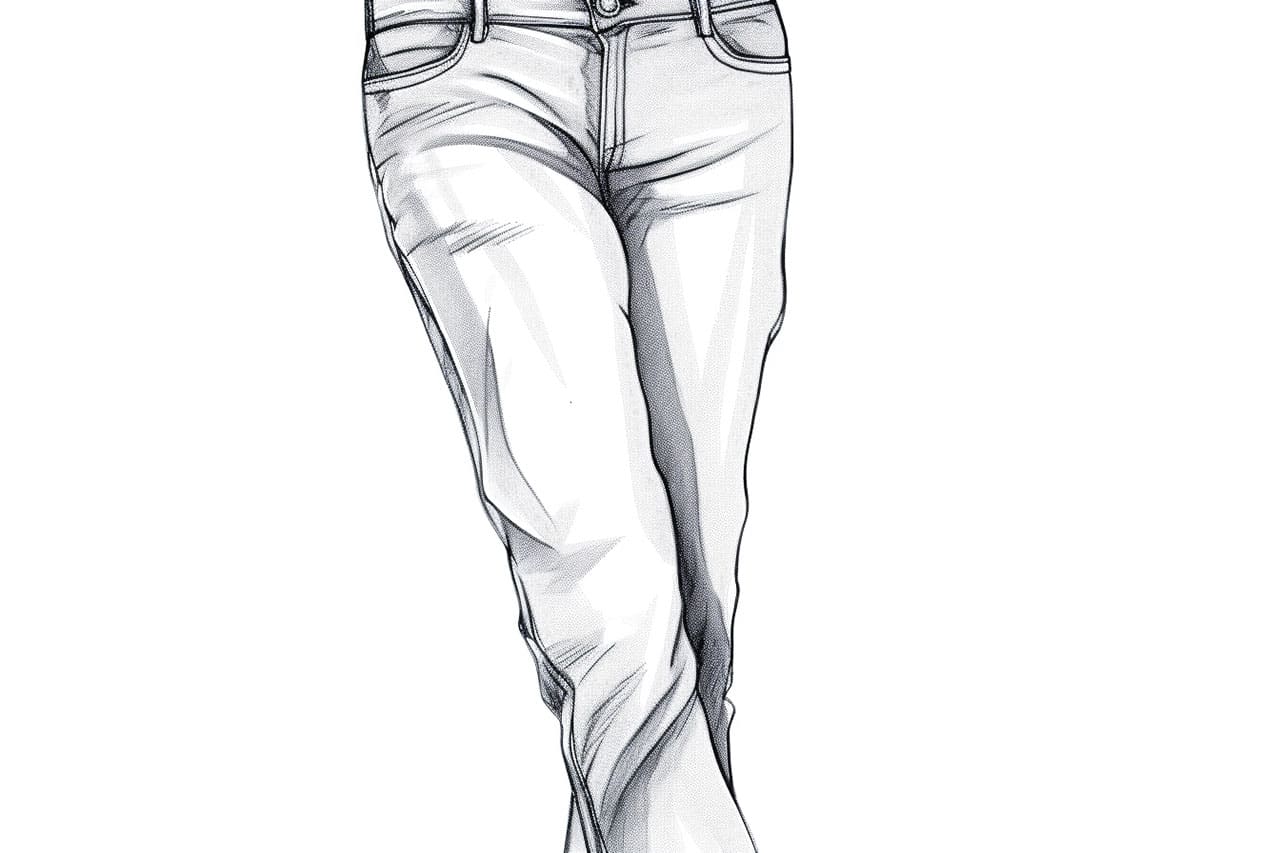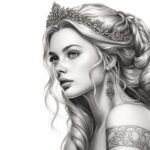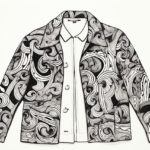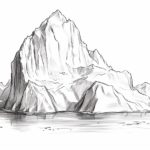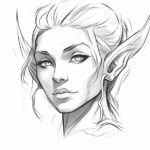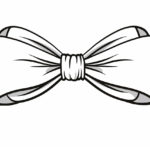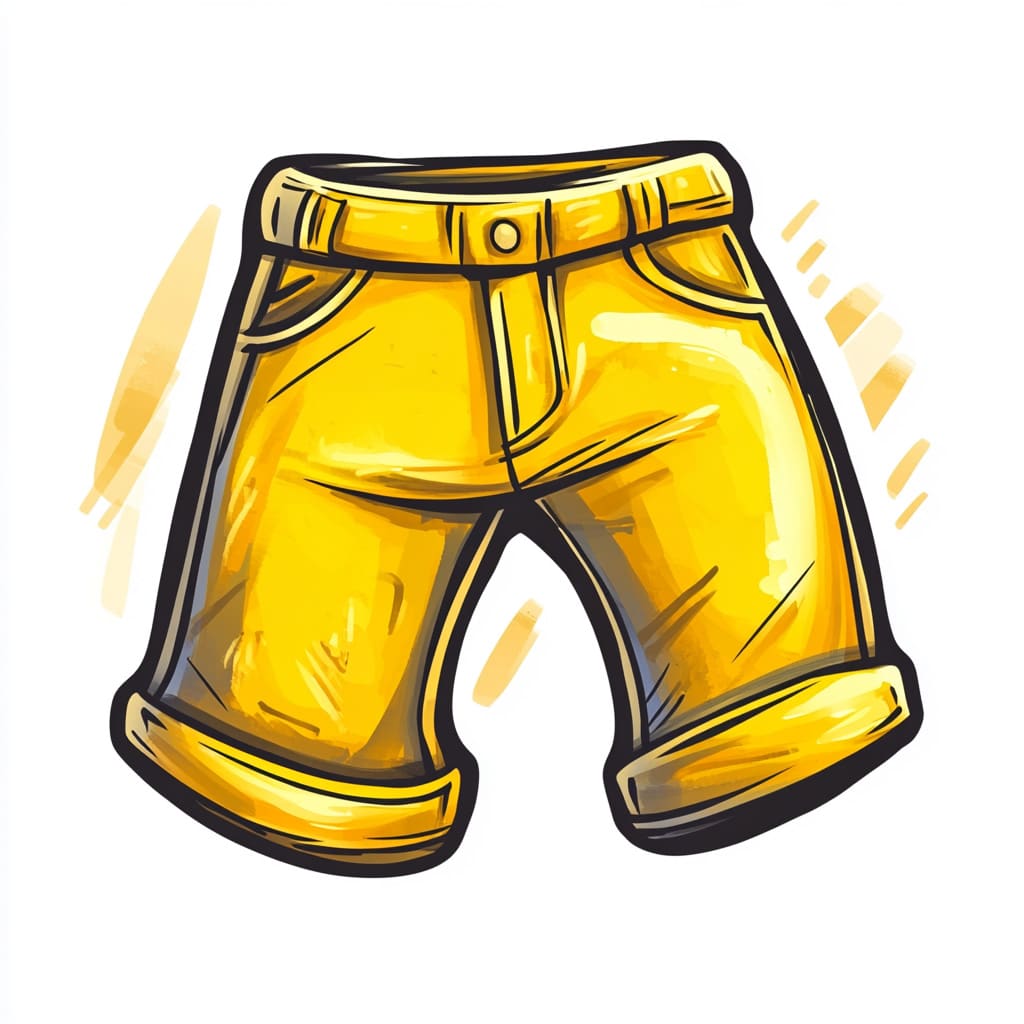
Drawing jeans might seem intimidating at first—the folds, stitching, and texture can all feel complex—but with the right techniques and guidance, it becomes an enjoyable and rewarding challenge. As an experienced artist and drawing instructor, I’m here to walk you through the process of how to draw jeans step by step. We’ll break down the structure of jeans into manageable shapes, explore how fabric behaves when worn, and learn how to capture those iconic denim details that make jeans instantly recognizable.
Whether you’re drawing casual streetwear, a character design, or a full fashion sketch, understanding how to illustrate jeans will elevate your work and add a layer of realism and style. In this guide, you’ll learn how to sketch the basic form, define seams and pockets, and add realistic folds, creases, and shading to bring your denim to life. By the end, you’ll have a confident grasp of how to draw jeans that look natural, stylish, and true to form. So grab your drawing tools and let’s dive in!
Materials Required:
Before we begin, make sure you have the following materials available:
- Pencil: Preferably an HB or 2B pencil for sketching and shading.
- Paper: Choose a medium-weight drawing paper or sketchbook.
- Eraser: A kneaded eraser is recommended for easily lifting graphite.
- Fine-tipped pen or marker: Optional for outlining and adding details.
- Colored pencils or markers: Optional for adding color to your jeans.
Now that you have all your materials ready, let’s get started on drawing jeans!
Step 1: Sketch the Basic Shape
Start by lightly sketching the basic shape of the jeans. Begin with a rectangular shape to outline the legs, and then add curves for the waist and hips. Remember that jeans have a slight looseness around the legs, so avoid making them too tight.
Step 2: Add the Details
Next, it’s time to add the details that give jeans their unique look. Start by drawing the seams along the outer legs. Jeans typically have a seam running from the waist down to the hem on each leg. Add stitching lines to indicate the pockets, and draw a small curve at the top for the waistband.
Step 3: Draw the Pockets
Jeans usually have front and back pockets. To draw the front pockets, add curved lines near the seams on the front of the jeans. For the back pockets, draw two rectangles or curved shapes near the center back seam. You can also add detailing such as small stitching lines or decorative designs on the pockets.
Step 4: Define the Wrinkles and Folds
To make the jeans look realistic, it’s important to add wrinkles and folds. Start by lightly sketching the creases around the knees and thighs. Jeans tend to wrinkle in various ways depending on how they are worn, so observe reference images or try on a pair of jeans to understand the folds better. Use curved lines and light shading to give depth and dimension to the wrinkles.
Step 5: Shade the Jeans
Now it’s time to add shading to your jeans to add volume and texture. Start by identifying the areas that would be in shadow, such as the inside of the thighs and the areas around the pockets. Use your pencil to add light and gentle shading, building up the dark areas gradually. Blend the shading with a blending stump or a cotton swab for a smooth and realistic look.
Step 6: Add Detailing
To enhance the realism of your jeans, add small details such as belt loops, buttons, and rivets. You can also use a fine-tipped pen or marker to outline the edges of the jeans and define the stitching lines. Be careful not to make the lines too dark or overpowering, as they should blend with the shading and not stand out too much.
Step 7: Optional: Add Color
If you want to add color to your jeans, you can use colored pencils or markers. Choose shades of blue or black for the denim and add subtle variations in color to create a worn or faded effect. Use light strokes or a light touch to layer the colors, allowing the texture of the paper to show through for a more realistic look.
Conclusion
Drawing jeans may seem daunting, but with practice and the right techniques, you can create realistic and stylish jeans in your artwork. Remember to start with a basic shape, add details such as pockets and seams, define the wrinkles and folds, shade the jeans to add depth, and add small details for a finished look. Whether you’re drawing jeans on a person or incorporating them into a fashion illustration, mastering this skill will enhance your artistic abilities.
So grab your pencils, paper, and eraser and get ready to draw some amazing jeans!
Gallery of Jeans Drawings
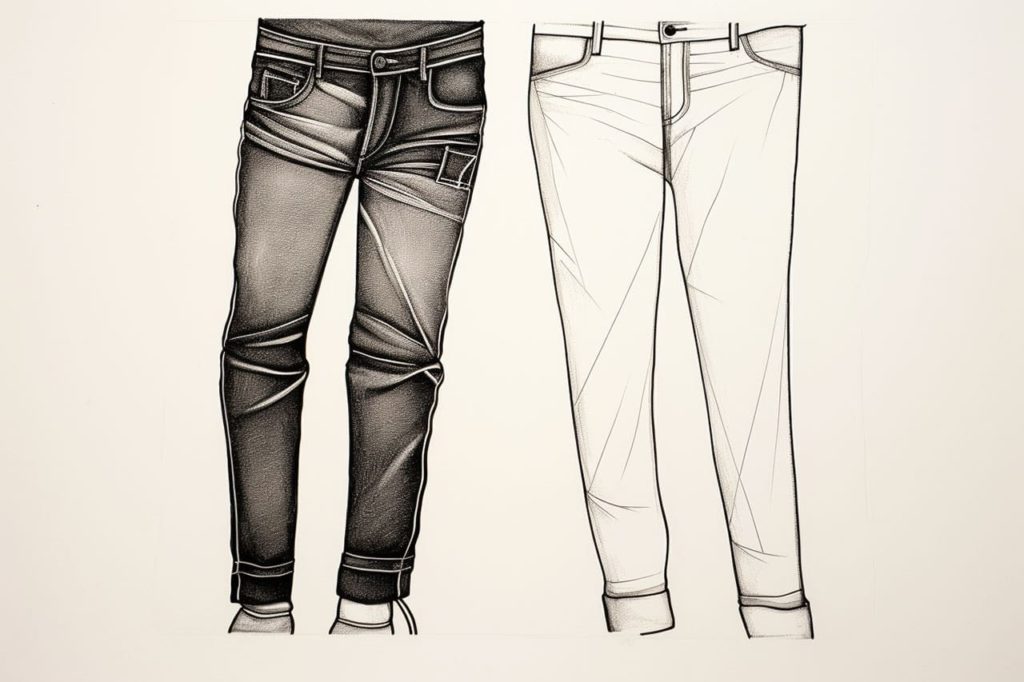
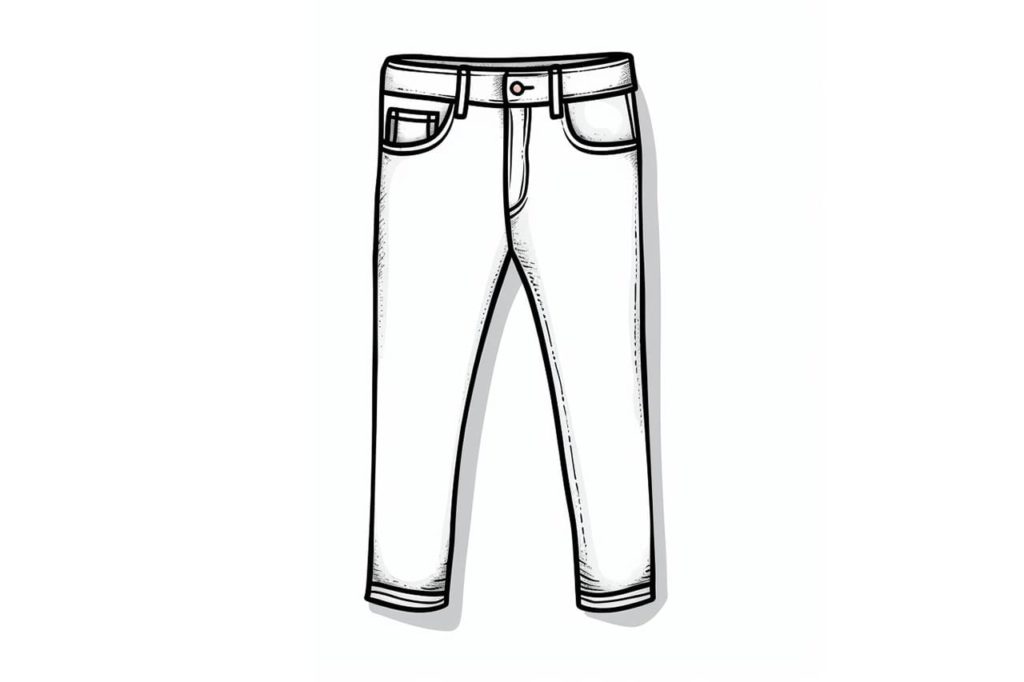
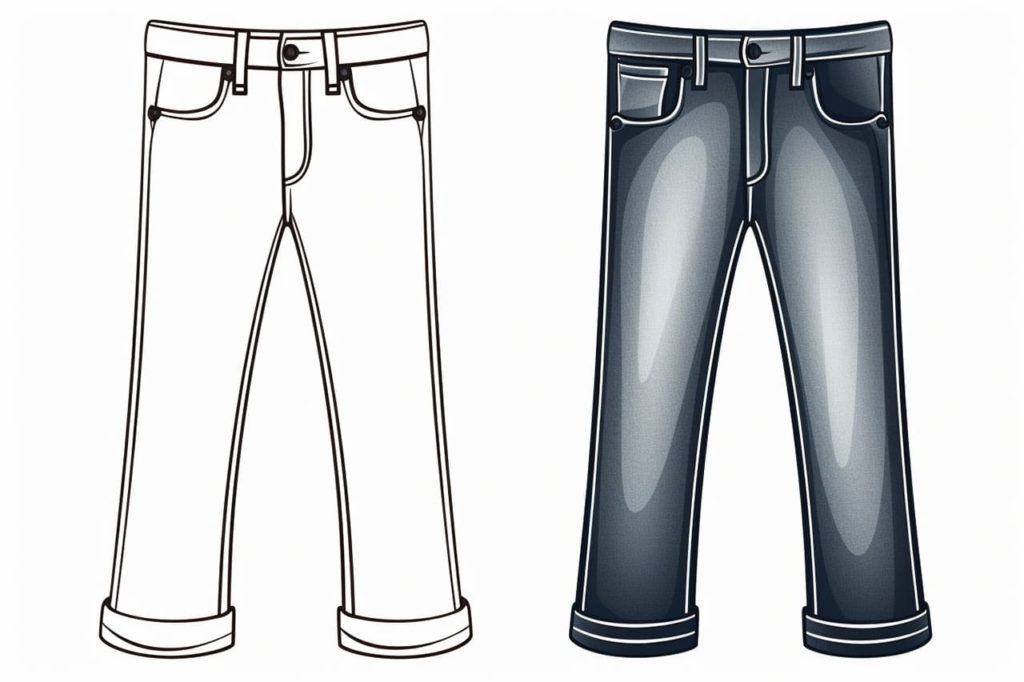
Fun Facts About Jeans
- Jeans were originally created for miners in the 1800s as durable work attire and were invented by Jacob Davis and Levi Strauss.
- The term “jeans” comes from the French word for Genoa, Italy (Gênes), where a similar type of fabric was first made.
- Blue jeans get their unique color from indigo dye, traditionally extracted from plants.
- Jeans became a symbol of rebellion in the 1950s, thanks to actors like James Dean and Marlon Brando.
- The first Levi’s jeans were sold at $1.25 a pair in 1873.
- Distressed jeans, popular for their worn appearance, entered mainstream fashion in the 1970s and 1980s.
- Some fashion historians suggest that the oldest pair of jeans found dates back to the 1870s.
- Jeans are one of the most popular types of pants worldwide, available in thousands of styles and colors.
- There’s a World Jeans Day celebrated annually on April 20th, encouraging people to wear their favorite pair in support of denim-related history and culture.
- Many jean brands, like Levi’s, have been working on sustainable production methods to lessen environmental impact.
Suggestions for Scenes and Settings for Jeans Drawings
- Classic Western Scene: Depict a cowboy wearing classic blue jeans, leaning against a wooden fence under a vast open sky.
- City Stroll: Illustrate a bustling urban street, with diverse characters in various styles of jeans walking amidst towering skyscrapers.
- Fabric Shop: Create a detailed scene showing a vintage fabric shop with bolts of denim and workers cutting pieces for custom jeans.
- Concert Vibes: Picture a music festival with fans in ripped jeans dancing, colorful lights beaming across the stage.
- Jeans Evolution: Showcase an artistic timeline wall with mannequins or sketches displaying the evolution of jeans from the 1800s to modern times.
- Denim Workshop: Draw an artisan workshop with tailors meticulously crafting jeans, surrounded by sewing machines and thread spools.
- Beach Casual: Illustrate a serene beachfront setting with friends gathered around a bonfire, wearing rolled-up jeans and enjoying the sun setting over the sea.
- Fashion Runway: Depict models strutting down a runway in an array of stylish jeans, spotlights highlighting their designs.
- Nature Walk: Imagine a tranquil forest path with hikers wearing jeans, exploring the landscape with backpacks and walking sticks.
- Office Attire: Show a modern office setting where workers multitask in their smart-casual jeans, balancing professionalism and comfort seamlessly.

